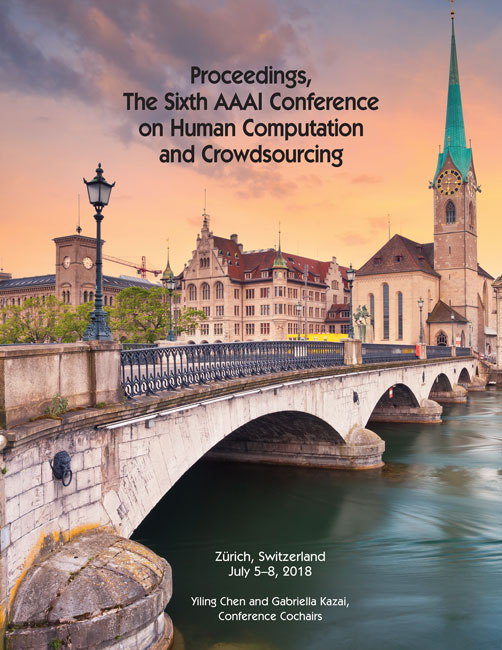Plexiglass: Multiplexing Passive and Active Tasks for More Efficient Crowdsourcing
DOI:
https://doi.org/10.1609/hcomp.v6i1.13340Keywords:
crowdsourcingAbstract
Efficiently scaling continuous real-time crowdsourcing tasks — which engage crowd workers over long periods of time to complete tasks, such as monitoring video for critical events — is challenging largely because of the cost of keeping people consistently engaged. Worse, for many continuous tasks on which progress cannot be immediately made, which we term passive tasks, this engagement effort is wasted until something becomes true about the environment (e.g., the annotation of a critical event cannot happen until the event is seen). In this paper, we present the idea of passive-active task multiplexing, in which continuous tasks that involve waiting for a change in state are completed concurrently with traditional (offline/non-real time) tasks. We then implement this idea in Plexiglass, a system that answers visual queries made by blind and low-vision users more efficiently by concurrently presenting a (passive) real-time sensing task and an (active) offline visual question answering tasks to workers. We explore different approaches to accomplishing this, and validate that task multiplexing can lead to an improvement in efficiency in these settings of more than 40% in terms of overall worker time taken and 85% decrease in cost of running continuous real-time tasks. This work has implications on how real-time crowdsourcing tasks are presented to workers, and it increases the feasibility of deploying continuous real-time crowdsourcing systems in real-world settings.

